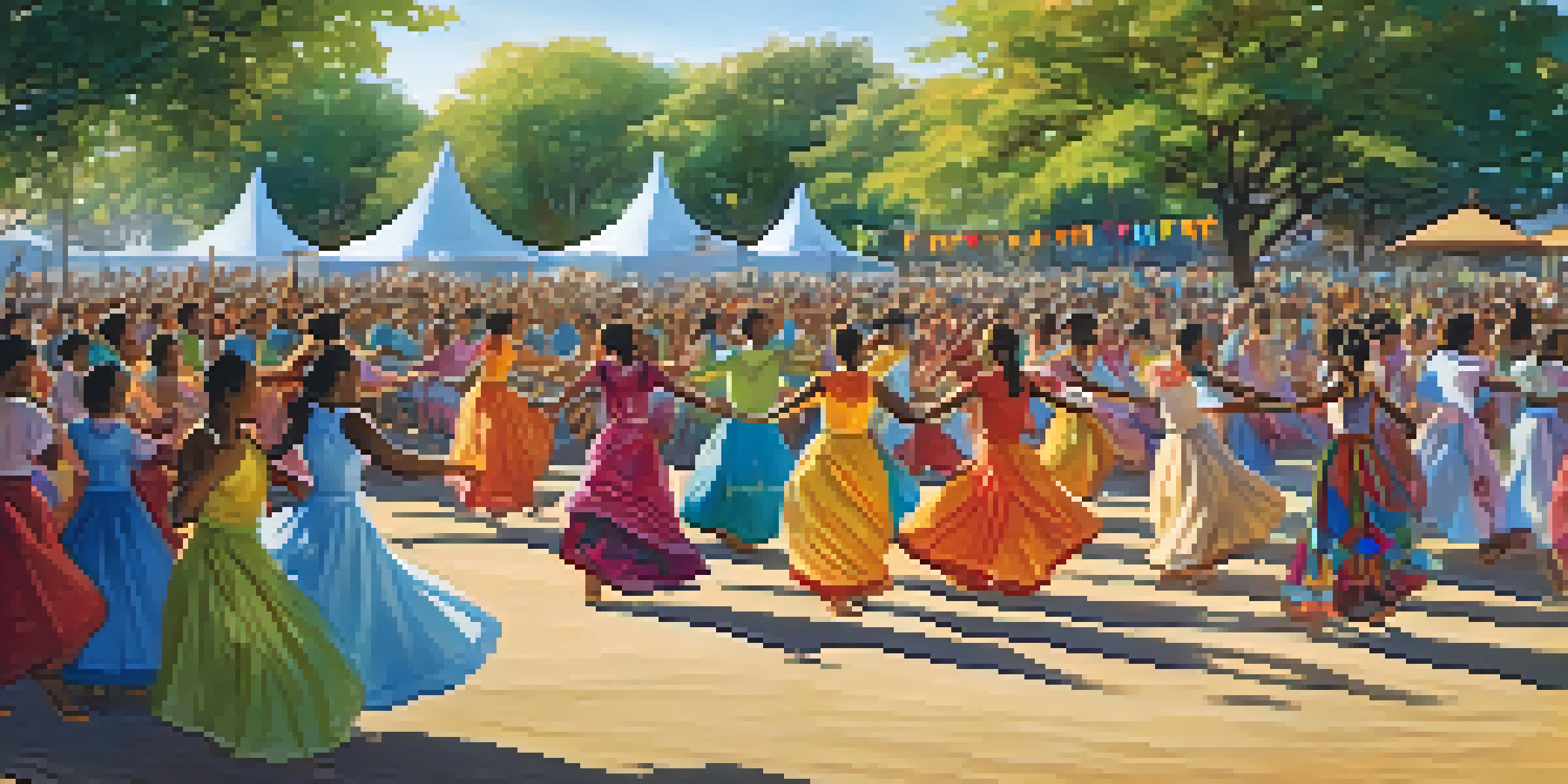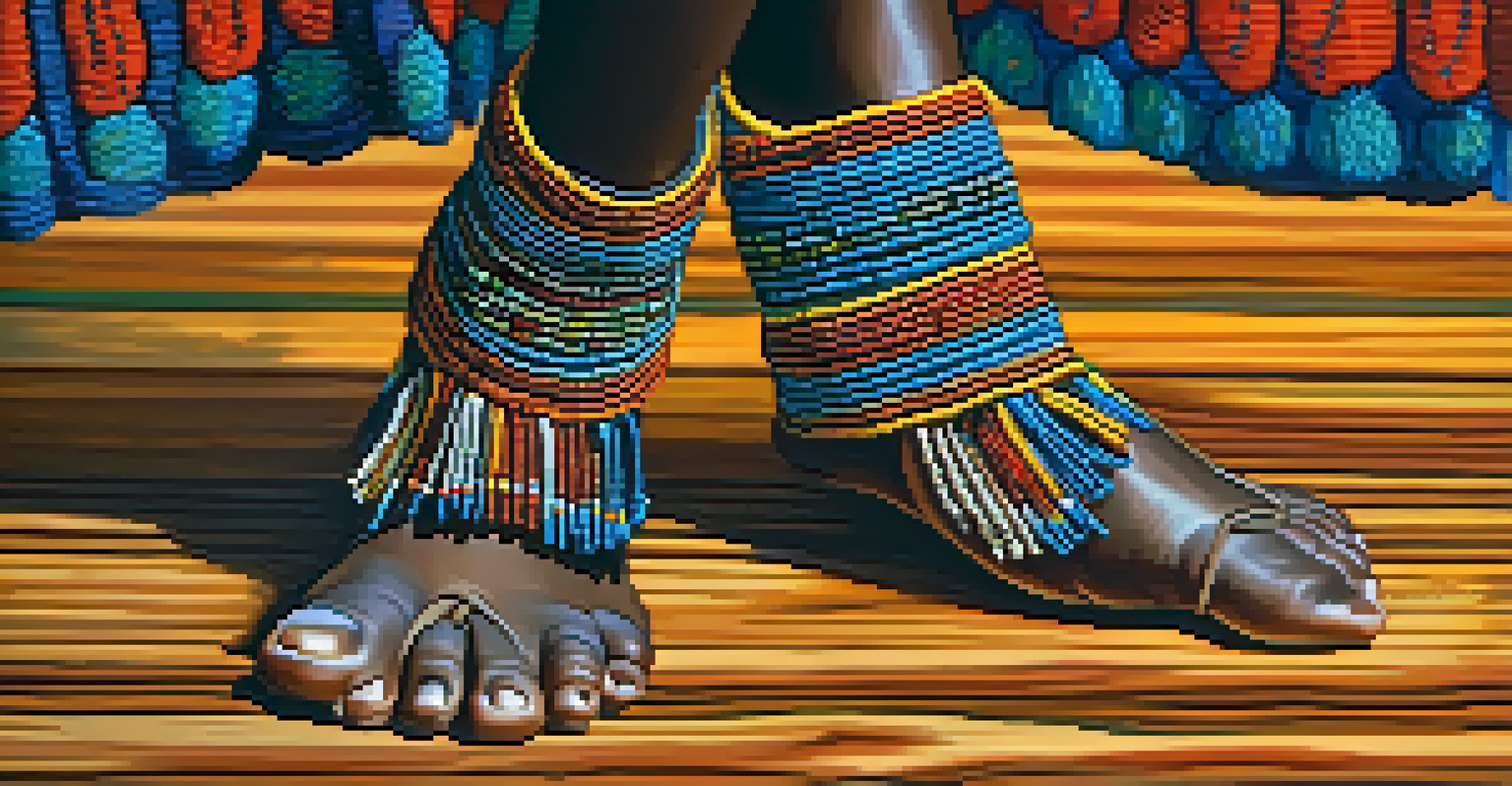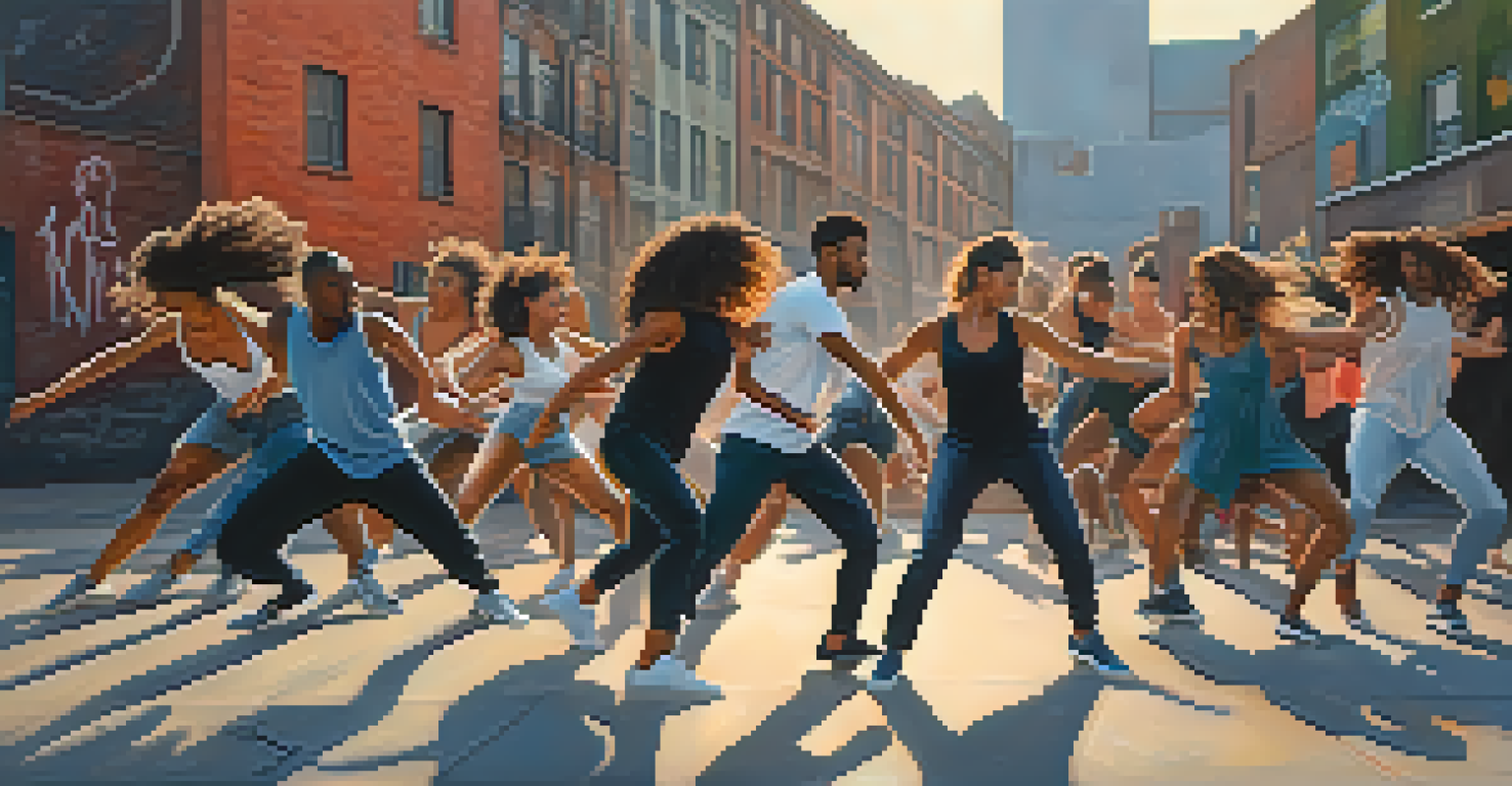Dance as a Medium for Racial Identity and Expression

The Connection Between Dance and Cultural Identity
Dance is a powerful form of expression that transcends language, and it often acts as a reflection of cultural identity. For many communities, traditional dances tell stories of their history, beliefs, and values. These movements can be a way to celebrate heritage and create a sense of belonging among individuals who share similar backgrounds.
Dance is the hidden language of the soul.
Take, for example, the vibrant rhythms of African dance, which not only entertain but also convey deep spiritual and cultural significance. Each step, each beat is a connection to ancestors and traditions that have been passed down through generations. This connection makes dance a vital aspect of cultural identity, allowing individuals to express who they are in a world that often seeks to box them in.
By participating in these dances, people can reclaim their narratives and assert their identities. Dance becomes more than just movement; it transforms into a medium through which individuals can articulate their experiences, struggles, and triumphs.
Dance as a Tool for Racial Expression
Racial identity is complex, and dance serves as a potent tool for expressing this intricacy. Through movement, dancers can communicate emotions and experiences that words might fail to capture. This is especially relevant in communities where language barriers exist or where cultural nuances may not be easily understood.

For instance, in hip-hop dance, performers often use their bodies to share stories of urban life, identity, and resistance. The raw energy and improvisational nature of hip-hop not only entertain but also challenge societal norms and highlight racial issues. This form of expression allows dancers to reclaim their narratives and bring attention to their experiences.
Dance Reflects Cultural Identity
Traditional dances serve as a powerful expression of cultural heritage, connecting individuals to their history and shared experiences.
Moreover, the fusion of various dance styles can also illustrate the blending of racial identities. Dancers may incorporate elements from different cultures, showcasing the interconnectedness of their experiences and promoting a broader understanding of racial identity.
Historical Context of Dance and Race
The history of dance is deeply intertwined with race, as many forms of dance have emerged from specific cultural and social contexts. For example, during the era of slavery in the United States, enslaved Africans used dance as a way to maintain their cultural identity and resist oppression. These dances often incorporated elements from African traditions, allowing them to express their heritage despite the harsh realities they faced.
The dance is a poem of which each movement is a word.
In the 20th century, the Harlem Renaissance brought African American culture, including dance, to the forefront. Styles such as jazz and swing became symbols of racial pride and resilience. These dances celebrated the vibrancy of African American life and contributed to the broader cultural landscape, challenging stereotypes and inviting others to join in.
This historical context highlights how dance has served as a means of survival and expression throughout history. It underscores the importance of understanding the roots of various dance forms to appreciate their significance in the ongoing conversation about race and identity.
Contemporary Dance and Racial Identity
In today's world, contemporary dance continues to be a powerful platform for exploring racial identity. Choreographers and dancers from diverse backgrounds are using their art to address issues related to race, discrimination, and social justice. This evolution reflects the changing dynamics of society and the ongoing struggle for equality.
For instance, companies like Alvin Ailey American Dance Theater have been at the forefront of this movement, using dance to explore themes of race and identity. Their performances often highlight the African American experience while inviting audiences to reflect on their own perceptions of race. This blend of artistry and activism resonates deeply with viewers and sparks important conversations.
Dance as a Medium for Advocacy
Dance acts as a form of resistance, empowering marginalized communities to raise awareness about social justice and racial inequality.
As contemporary dance evolves, it remains a space where racial identities can be explored and expressed. It challenges performers and audiences alike to consider their own biases and perceptions, fostering a greater understanding of the complexities of race.
Dance as Resistance and Advocacy
Dance has long been a form of resistance, allowing individuals and communities to challenge oppression and advocate for change. Through powerful performances, dancers can confront societal issues, raise awareness, and inspire action. This form of advocacy not only highlights injustices but also empowers marginalized voices.
For example, the recent rise in dance activism has seen dancers taking to the streets, using their bodies to protest against racial inequality and injustice. These movements not only draw attention to important issues but also create a sense of unity and solidarity among participants. Dance becomes a rallying cry, a way to mobilize and engage others in the fight for justice.
This blend of art and activism exemplifies how dance can transcend entertainment and become a catalyst for social change. It showcases the power of movement as a language of resistance, uniting individuals in their shared struggles and aspirations.
The Role of Dance in Community Building
Dance plays a vital role in fostering community and connection among individuals of diverse racial backgrounds. Through group classes, performances, and cultural festivals, dance creates spaces where people can come together to share their traditions and learn from one another. This communal aspect of dance strengthens bonds and promotes understanding across cultures.
For instance, community dance programs often encourage participation from individuals of all ages and backgrounds. These initiatives not only teach dance skills but also foster relationships that transcend racial and cultural divides. Participants can celebrate their differences while finding common ground through the joy of movement.
Community Building Through Dance
Dance fosters connections among diverse racial backgrounds, creating spaces for individuals to share traditions and promote understanding.
As communities come together to dance, they create a tapestry of shared experiences and stories. This collaborative spirit reinforces the idea that dance is not just an individual pursuit but a collective journey that enriches everyone involved.
The Future of Dance and Racial Identity
As we look to the future, the relationship between dance and racial identity is likely to evolve even further. The rise of digital platforms has made it easier for dancers to share their work and connect with audiences worldwide. This accessibility opens new opportunities for diverse voices to be heard and celebrated.
Furthermore, as societal conversations around race continue to grow, dance will undoubtedly remain a vital medium for expression. Emerging choreographers are increasingly blending various styles and cultural influences, creating innovative works that challenge traditional norms and reflect the complexity of modern identity.

Ultimately, the future of dance as a medium for racial identity and expression is bright. It promises to be a space where creativity flourishes, narratives are shared, and community is built, all while continuing to advocate for understanding and equality.